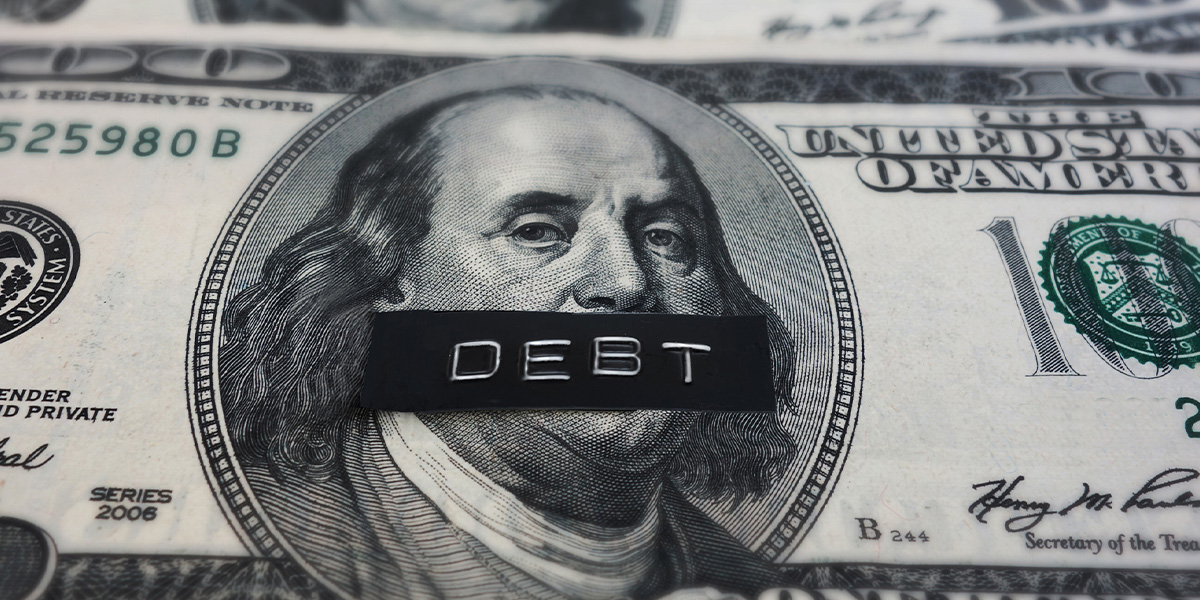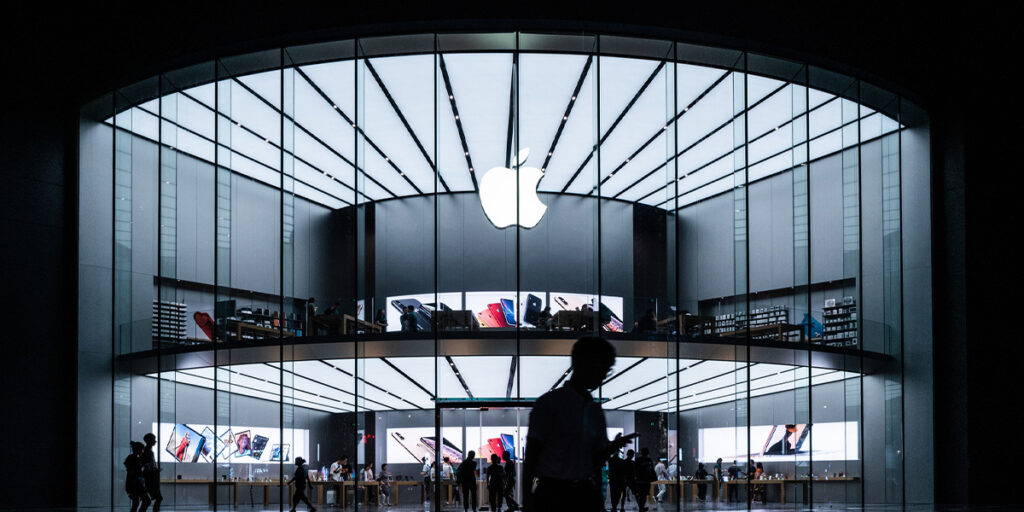For those of you who would prefer to listen:
America has a debt problem. It’s currently $34.7 Trillion and counting. It costs over $1 Trillion a year to service it. As a reminder, if you stacked $1 Bills vertically end-to-end from the ground to the sky, it would reach the Moon and nearly back to Earth. How about that for a visual?
The Congressional Budget Office recently reported it expects US public debt to rise to 166% of Gross Domestic Product (GDP) by 2054. That’s 30 years from now. It’s currently 99% this year if you exclude the debt the Federal government owes itself. Including it, debt-to-GDP is over 120%.
It’s not just the government that has a debt problem. Total household debt reached $17.7 Trillion this Spring. Mortgages account for a majority at $12 Trillion. Higher mortgage rates have made things tougher for borrowers. Credit card debt in America exceeds $1 Trillion for the first time ever. What’s worse, it comes with 20%+ interest rates. That’s really expensive money. It’s the kind of debt that buries people. Credit card debt is amongst the worst kind of debt out there. Here’s our repeated Bedell Frazier Public Service announcement: Pay off your credit cards monthly.
Solid economic growth and the AI revolution are masking the problem. Everyone got used to cheap, if not free money, borrowing near zero. The younger generations never knew the difference. Many of you remember those double-digit mortgage rates in the 1970s and 80s. The last couple of decades saw sub 6% rates, falling below 3% at one point during Covid. No longer. Everything comes with a cost eventually. There’s no such thing as free.
Spending has been the biggest issue, from both parties that have occupied the White House since Y2K. That was the last time America had a surplus. Presidents 45 and 46 spent Trillions of Dollars in response to Covid and to stimulate an economic recovery. Growth is the solution. But growth needs to outstrip spending so that excess reserves can tackle the debt. In 2023, the US ran an 8.8% deficit despite having a historically low 3.5% unemployment rate and an Economy that grew close to 3%, which are strong economic results. However, economic growth is slowing, but government spending is not.
Q1 GDP was revised down this week to an annualized 1.3% growth. It was initially reported at 1.6%. The downward revision was due to weaker consumer spending. Many retailers keep citing a tapped-out consumer for disappointing earnings reports. McDonald’s is bringing back the value menu. High prices have people tightening their wallets.
What does this all mean? The obvious is being reflected in the Stock Market, particularly with certain retail stocks. A slowing Consumer means a slowing Economy, as consumer spending accounts for 70% of GDP. The slowdown might help keep the trend of lower inflation going, which in turn will allow the Fed to start cutting rates. More on that later. Slower growth but increased government spending could pose a big problem and the Bond Market has been sending those signals.
At some point, investor demand could dry up for American Treasuries, something unthinkable for decades. That could cause Market turmoil and raise geopolitical concerns, given the role that the US Dollar and Treasuries play in the international economic system. Neither Presidential candidate is addressing the issue in their campaigning. In fact, the one common trait in their Presidencies has been spending. Can kicking has been the way in Washington.
Here’s the deal: There’s good debt and bad debt. Mortgages are considered good debt. It’s a loan designed to purchase a historically appreciating asset; Your home. Credit cards are considered bad debt. It’s expensive and generally used to buy stuff that doesn’t increase in value. Credit cards can really get you in trouble. Either way, borrowing is a big responsibility. It requires discipline and a plan. That’s financial fitness. The fact remains, debt is a 4-letter word.
This caught my attention: Weak Treasury auctions. I know it’s not the most exciting subject. But it sure does matter to the Market. $69 Billion worth of 2-Year Treasuries were issued this week. That matched the all-time high for bond issuance of this maturity, which was reached last month. The Treasuries were bid and bought at a 4.917% yield. The yield was 4.907% when issued. That means investors wanted a higher yield and lower price. That’s never a good sign.
The bid to cover was 2.41, the weakest since November 2021. The bid-to-cover ratio is the Dollar amount of bids received in an auction versus the amount sold. A higher ratio indicates strong demand. 57.9% was taken by indirect bidders. 64% has been the average. Indirect bidders are large institutions and commonly foreign accounts. Direct bidders like banks, insurance companies, individual investors and mutual funds took down 25.9%. That was actually a bright spot, being the best since November 2019. Dealers took the rest, 16.6% of the auction. That was higher than average.
That wasn’t it. There were 2 in 1 day. $70 Billion of 5-Year Treasuries were offered the same day. It was also met with weak demand. The bid-to-cover ratio came in at 2.3, below the average of 2.45. Treasury sold the new 5-Year notes at a yield of 4.553%, more than 1 basis point above the pre-auction level of 4.54%. The 5-year sale left dealers keeping nearly 20% of the auction versus their recent average of 16.5%.
A case can be made that the 2-Year and 5-Year auctions were challenged by thinner markets coming off the holiday weekend, coupled with the combination of 2 auctions in one day. But Wednesday brought another. Treasury sold $44 Billion of 7-year notes. Indirect and direct bidders took below-average quantities, which forced the dealers to step in and buy more than usual. Importantly, this is not a concern of whether Treasuries are the highest quality. They are. Quite simply, this is the Bond Market sending a signal that Fiscal discipline is needed. It should be a wakeup call to Washington. Unfortunately, Washington is consumed with other issues.
June is expected to bring the biggest global bond issuance for the year. It’s not just the United States. Developed market governments are still borrowing large amounts as they help their economies recover from the shocks of Covid and the impacts of wars. Government bond supply is likely to rise to $340 Billion for the United States, Eurozone countries and Britain. Investors are demanding a higher risk premium to lend, especially for longer maturities. There’s a reason that the Treasury Department is not aggressively selling 20 and 30-Year maturities.
The Fed is in a tough spot. America’s central bank is trying to tame inflation without killing the Economy, all in a Presidential election year. The Federal Reserve Bank was designed to be politically neutral, something Fed Chair Powell aggressively asserts at every angle. After a series of rate hikes which began in 2022, monetary policy has been restrictive. The Market has been anticipating rate cuts all year. The meeting minutes released this week indicate the policymakers haven’t ruled out more rate increases. That has caused much turmoil in both the Bond and Stock Market of late. It’s pretty clear that rates will be kept higher for longer. But how long is that? There’s an election in November that is poised to be the most controversial in history, regardless of the results. Can the Fed make rate changes in an election year?
The Fed has a history of moving interest rates during a Presidential election year, in both directions. Under Alan Greenspan, the Fed cut interest rates by a full 1% in 1992. That was the year Bill Clinton beat George HW Bush. Eight years later, the Greenspan-led Fed raised rates by 1%. That was Y2K when the Dot-com bubble peaked. George W Bush beat Al Gore later that year. You probably remember that contested election. The Fed raised rates another 3/4% four years later as the Housing boom was in mid spike. George W beat John Kerry a couple months later.
The biggest interest rate moves came more recently. In response to the Financial Crisis in 2008, Ben Bernanke’s Fed cut rates by 3.25% before Barrack Obama took the White House, beating John McCain. And the most recent Presidential election in 2020, the current Fed cut rates by 1.5% in March, taking them to zero, ahead of Joe Biden’s victory over Donald Trump during Covid. Now we have a rematch which is even more heated. Everything is considered political. I repeat, the Fed is in a tough spot. More importantly, America is in a tough spot too.
Back to the Market:
A late session rally Friday wasn’t enough to extend the 5-week winning streak for the S&P. May proved to be a strong month for stocks. Friday’s intraday reversal from losses to gains probably had more to do with the end of the month positioning than anything fundamentally. Inflation is still a big issue. But the Personal Consumption Expenditure (PCE) report came in at 0.2%, as expected. It’s considered the Fed’s preferred inflation measure. This report provides further evidence of price increases slowing. Many on the Street believe the Fed will likely need Core PCE prints in 0.2-0.3% range for several months to keep a September cut in play.
The 2 biggest drivers of stocks continue to be interest rates and AI. They seem to go back and forth in focus. Bond yields have been super volatile. Lower yields have been fuel for higher stock prices. They fell most of May. That is, until earlier this week when they sharply rose. Yields fell off the PCE report which sent stocks higher into the weekend. The problem for the Fed today: Consumer spending seems to be slowing faster than inflation. That could lead to the dreaded word: Stagflation.
The AI theme has by far been the biggest driver for the Stock Market for over a year. But there have been some cracks in the Tech rally. Software companies are sending signals of a spending stall. Tech stocks have been priced for perfection. No matter how strong the secular trend, stocks don’t fly to the sky forever. But under the hood, there’s been plenty of movement between sectors. We continue to see a rotation of strength out of Tech and into Commodities and Materials. Hard, real assets are coveted. The theme appears to have legs into Summer.
Have a nice weekend. We’ll be back, dark and early on Monday.
Mike







